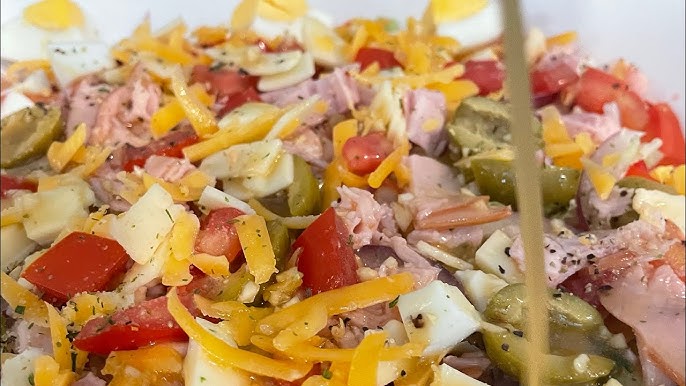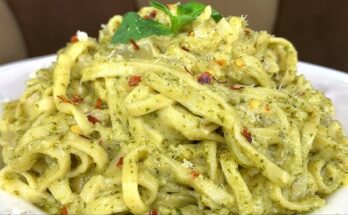Asian Dressing Recipe: Asian dressings are the superheroes of the condiment world. They bring together sweet, salty, tangy, and umami-rich flavors in one silky pour. Whether you’re tossing a crunchy slaw, drizzling over grilled meat, or looking for a bold marinade, Asian dressings deliver depth and punch that wake up your taste buds.
What sets them apart? It’s the balance. Think soy sauce, sesame oil, rice vinegar, garlic, and ginger—all perfectly blended into a magical elixir. They don’t just dress your salad, they elevate your entire dish.
These dressings are widely used across cuisines inspired by East and Southeast Asia. From Korean BBQ sides to Japanese salads and Thai noodle bowls, there’s no limit to their versatility. Plus, they’re super easy to whip up at home with everyday pantry ingredients.
Essential Ingredients for Asian Dressing
To make a killer Asian dressing, the ingredients are the stars of the show. You don’t need anything fancy—just fresh, quality staples that pack flavor. Here are the key players:
1. Soy Sauce (or Tamari)
This is your salty umami base. Opt for low-sodium if you want more control over salt levels.
2. Rice Vinegar
Light and tangy, this adds that punchy acidity that balances the saltiness.
3. Sesame Oil
Just a little of this nutty oil goes a long way. It’s what gives the dressing its signature aroma.
4. Garlic and Ginger
Fresh is best. Grated garlic and ginger bring spicy warmth and depth.
5. Sweetener
Honey, brown sugar, or maple syrup helps round out the tang and salt with a touch of sweetness.
6. Optional Add-Ins
- Chili flakes or Sriracha for heat
- Lime juice for a citrusy kick
- Fish sauce for extra umami
- Miso paste for thickness and depth
- Fresh herbs like cilantro or green onion
Want it creamier? A spoon of mayo or Greek yogurt can change the game.
These ingredients don’t just combine—they harmonize. The trick is to start small and build up to your taste preference.
Tools You’ll Need
You don’t need a professional kitchen to whip up a flavorful Asian dressing. Just a few basics:
1. Mixing Bowl
Medium-sized, preferably glass or stainless steel.
2. Whisk or Fork
You’ll need it to mix the ingredients and emulsify the dressing.
3. Measuring Spoons and Cups
Accuracy matters, especially when balancing strong flavors.
4. Garlic Press or Microplane
Makes quick work of fresh garlic and ginger.
5. Mason Jar with Lid
Perfect for shaking, mixing, and storing your dressing in one go.
Having the right tools not only makes the process smoother but also helps in getting the consistency and flavor spot-on.
Step-by-Step Guide to Making Asian Dressing
Now comes the fun part—let’s whip up this flavor bomb step by step.
Step 1: Gather Your Ingredients
Before you start, line up everything you need. For a basic dressing:
- 2 tbsp soy sauce
- 1 tbsp rice vinegar
- 1 tbsp sesame oil
- 1 tsp honey or brown sugar
- 1 garlic clove, grated
- 1 tsp grated ginger
- Optional: chili flakes, lime juice, miso paste
Step 2: Mix Your Base Flavors
In a bowl or mason jar, combine soy sauce, rice vinegar, and sesame oil. These are your liquid base flavors.
Step 3: Add Aromatics and Sweetener
Toss in your garlic, ginger, and honey. These bring heat, spice, and balance. Stir or whisk until the honey dissolves completely.
Step 4: Emulsify the Dressing
Now whisk vigorously until the oil and vinegar blend into a smooth mix. If using a jar, shake it like you’re making a cocktail.
Step 5: Taste and Adjust
Here’s where you make it your own. Want more tang? Add a splash of lime. Too salty? Add a little water or more sweetener. Keep tasting and adjusting till it’s perfect for you.
Step 6: Store It Properly
Transfer to a clean jar and seal tightly. Store in the fridge for up to 1 week.
Once done, you’ve got a versatile, flavor-packed dressing ready to transform any dish.
Variations of Asian Dressing
Asian dressing isn’t one-size-fits-all. With a few tweaks to the base recipe, you can create an array of delicious variations to suit different cuisines and flavor profiles. Let’s dive into some fan favorites:
1. Sesame Ginger Dressing
This variation is smooth, aromatic, and ideal for salads and noodle bowls.
- Ingredients: Toasted sesame oil, soy sauce, rice vinegar, fresh ginger, garlic, honey, and a bit of olive oil for balance.
- Flavor Profile: Nutty, tangy, slightly sweet, and spicy.
- Best With: Kale salads, soba noodles, grilled chicken, or tofu.
2. Spicy Thai-Style Dressing
For those who love heat, this one’s for you.
- Ingredients: Fish sauce, lime juice, red chili flakes or fresh Thai chilies, palm sugar, and a splash of soy sauce.
- Flavor Profile: Salty, spicy, sour, and a little sweet.
- Best With: Thai salads like papaya salad, grilled meats, or as a dipping sauce.
3. Soy-Lime Vinaigrette
Light and zesty, this version is super refreshing.
- Ingredients: Soy sauce, lime juice, olive oil, garlic, and a touch of honey.
- Flavor Profile: Citrusy, umami-rich, with a mellow sweetness.
- Best With: Green salads, seafood dishes, and grilled vegetables.
Each version maintains the core principles of Asian dressing—balance and boldness—while offering something uniquely satisfying. Play with ingredients until you find your go-to version!
Best Ways to Use Asian Dressing
Once you have your dressing, the possibilities are endless. It’s more than just salad sauce—it’s a multipurpose flavor bomb. Here’s how to use it:
1. As a Salad Dressing
This is the classic route. Whether it’s a crunchy cabbage slaw, a bowl of fresh greens, or an Asian-style pasta salad, this dressing ties it all together. For best results, toss the salad just before serving so the leaves stay crisp.
2. Marinade for Proteins
Marinate chicken, beef, tofu, or shrimp for 30 minutes to an hour before cooking. The acidic components tenderize the protein, while the umami-rich soy sauce infuses deep flavor.
3. Dipping Sauce
Serve it as a dip for dumplings, spring rolls, or tempura. You can tweak it by adding a little peanut butter or crushed peanuts for a richer texture.
4. Drizzle for Grain Bowls
Add a punch to rice bowls or quinoa salads. Combine with roasted veggies, edamame, and a soft-boiled egg for a delicious, balanced meal.
5. Stir-fry Finisher
Use it at the end of a stir-fry to add a final splash of flavor without overwhelming the dish.
Versatility is what makes Asian dressing a staple in any kitchen. With just one jar, you can elevate dozens of meals.
Storing and Shelf Life
Homemade Asian dressing can last quite a while when stored properly, giving you a quick flavor fix anytime.
Storage Tips:
- Container: Use an airtight glass jar or bottle.
- Location: Keep it in the fridge, not the pantry.
- Shake Before Use: Oil and vinegar will separate over time—just give it a good shake before using.
Shelf Life:
- Most homemade dressings stay fresh for up to 1 week in the fridge.
- If you’ve used fresh garlic or ginger, use it within 5–7 days to ensure freshness.
- If you notice any change in smell, color, or taste, it’s time to toss it.
Pro tip: Label your jar with the date you made it, so you’re never guessing.
Common Mistakes to Avoid
Even with simple recipes, a few missteps can throw off your dressing. Here’s what to steer clear of:
1. Overpowering Flavors
Soy sauce is salty, sesame oil is strong, and ginger can be intense. It’s easy to go overboard. Start with smaller amounts and build up slowly.
2. Skipping Emulsification
If you don’t mix well, the oil and vinegar won’t combine properly. This leads to uneven flavor and texture. Always whisk or shake thoroughly.
3. Using Stale Ingredients
Old garlic, expired sesame oil, or flat vinegar can ruin the taste. Use fresh, high-quality ingredients for the best flavor.
4. Not Tasting As You Go
Everyone’s palate is different. Don’t just follow measurements blindly—taste and adjust along the way.
5. Storing It Wrong
Leave it out on the counter, and you risk spoilage. Always refrigerate and seal tightly.
By avoiding these common errors, your Asian dressing will come out perfect every time.
Health Benefits of Homemade Asian Dressings
Making your own Asian dressing isn’t just about taste—it’s also about making healthier choices. Store-bought dressings often come loaded with preservatives, high-fructose corn syrup, artificial flavors, and excessive sodium. When you make it yourself, you get full control over every drop.
1. Fewer Additives and Preservatives
Homemade dressings are free of unnecessary chemicals and preservatives. You’re working with whole, recognizable ingredients, so there’s nothing hiding in the fine print.
2. Lower Sodium Options
While soy sauce is salty, you can opt for low-sodium versions or balance it with more acid (like vinegar or citrus) and a touch of sweetness. This gives you all the flavor with less salt.
3. Natural Sweeteners
Instead of processed sugars, you can use honey, maple syrup, or even mashed dates. These bring in natural sweetness and add depth.
4. Healthy Fats
Sesame oil is rich in healthy fats and antioxidants. If you’re adding olive oil or avocado oil, you’re increasing your intake of heart-friendly monounsaturated fats.
5. Customizable for Dietary Needs
Need it vegan? Skip the fish sauce or honey. Going keto? Avoid sugary syrups and go for stevia or monk fruit. Watching calories? Add more vinegar and water to dilute without losing flavor.
In short, DIY dressings offer a perfect combo of flavor and function—without compromising your health.
FAQs about Asian Dressing Recipe
1. Can I make Asian dressing without oil?
Yes! For an oil-free version, skip sesame oil and use a bit more vinegar, soy sauce, and perhaps some tahini or miso to add richness and texture.
2. Is this dressing keto-friendly?
Absolutely—just replace sweeteners like honey or sugar with keto-safe options like erythritol or monk fruit sweetener.
3. What’s the best vinegar to use in Asian dressings?
Rice vinegar is ideal for its mild, slightly sweet taste. Apple cider vinegar can work in a pinch, but it’s more tangy and bold.
4. How long does homemade Asian dressing last in the fridge?
It typically lasts 5–7 days when stored in a sealed jar in the refrigerator. Always do a quick smell and taste test before using.
5. Can I freeze Asian dressing?
It’s not recommended. Freezing can alter the texture and flavor, especially if it contains fresh ingredients like garlic and ginger.
Conclusion
There you have it—your complete, step-by-step guide to making an irresistible Asian dressing right in your own kitchen. Whether you want a quick salad topper, a marinade that packs a punch, or a versatile dipping sauce, this dressing delivers it all.
The beauty lies in its balance—sweet, salty, tangy, and umami-rich. With just a few pantry staples and a couple of minutes, you can whip up something that instantly elevates your meals. Plus, it’s healthier, customizable, and way more flavorful than store-bought versions.
So why not give it a try today? Mix, taste, tweak—and make it yours. Once you get the hang of it, you’ll never go back to bottled dressings again.



